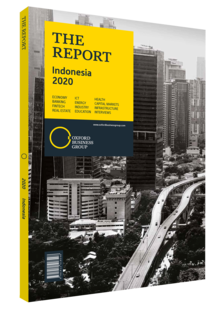International appeal of Indonesia's modest fashion
In recent years modest fashion inspired by Islam has shifted from a niche market to the mainstream, with designs that appeal to religious consumers appearing at major fashion weeks, and global clothing brands such as H&M, Macy’s, and Marks & Spencer launching their own labels. Now in the limelight, modest fashion is expected to grow substantially. Spending on modest apparel reached $270bn in 2017 and is anticipated to grow by around 5% annually to reach approximately $361bn by 2023, according to the “State of the Global Islamic Economy Report 2018-19” released by Thomson Reuters and DinarStandard.
Local Market
While the domestic modest fashion market is relatively young, recent figures highlight its potential. According to the Thomson Reuters-DinarStandard report, Indonesia spent the third-highest amount on modest fashion of all countries in 2017, at $20bn, behind only the UAE ($22bn) and Turkey ($28bn). Indonesia’s modest fashion industry was valued at around $12.4bn in 2018, and stakeholders are looking to increase this figure by scaling up production and focusing on boosting exports.
In May 2019 the Indonesia Halal Lifestyle Centre (IHLC) told local press that in 2017 the country exported $7bn worth of goods to countries in the Organisation of Islamic Cooperation, but the majority of these were raw materials. The IHLC noted it was working to increase the share of exports to 10% of the value of the local market in the coming years.
Indonesia’s demographics support the potential for growth of the local modest fashion market: it is the most populous Muslim country, with a population of around 268.1m in 2019, according to the “Statistical Yearbook of Indonesia 2020” by Statistics Indonesia. Muslims are the fastest-growing religious group worldwide, according to a 2017 report by the Pew Research Centre. The number of adherents to Islam are expected to increase from 1.8bn in 2015 to approximately 3bn in 2060, accounting for almost a third of the world’s population. “Indonesia is the largest country in South-east Asia and is majority Muslim,” Riel Tasmaya, CEO of muslimarket.com, told OBG. “There is significant potential for modest fashion here. Over recent years, we have seen a shift away from Western-style clothing towards more conservative styles, such as hijabs [headscarves]. This trend has been particularly driven by the younger generation, who are becoming trendsetters in this area.”
Indeed, Indonesia’s modest fashion market has already attracted the interest of major retailers. Among those who have entered the market are H&M Modest, Uniqlo Modest and COTTONINK. It has also attracted fashion shows such as the Muslim Fashion Festival, the fifth iteration of which was held in February 2020 in Jakarta. The show featured 400 modest fashion brands and focused on sustainability.
Technology
While bricks-and-mortar stores dominate the overall retail sector – accounting for about 97% of overall sales – the country’s adoption of new technology, in particular e-commerce, has helped the modest fashion industry expand. “We have managed to grow by embracing technology, for example by providing our own delivery services,” Tasmaya told OBG. “This is crucial in Indonesia. In the modest fashion market, there are a lot of smaller-scale sellers, but their operations are limited because it is difficult for such companies to easily move their goods around the country.” A continued focus on technology will help the segment develop and adapt to changing tastes and demands. While modest fashion has seen success in recent years, there remain a number of barriers to further development. One such challenge is access to the global supply chain – a constraint for the retail sector as a whole, as well as other segments of the economy. Specifically to the modest fashion segment, local companies must work to further diversify their product offerings in order to align with the styles popular in other countries, as well as those in Indonesia.
You have reached the limit of premium articles you can view for free.
Choose from the options below to purchase print or digital editions of our Reports. You can also purchase a website subscription giving you unlimited access to all of our Reports online for 12 months.
If you have already purchased this Report or have a website subscription, please login to continue.

